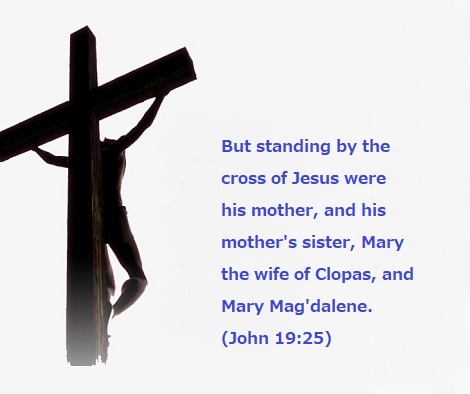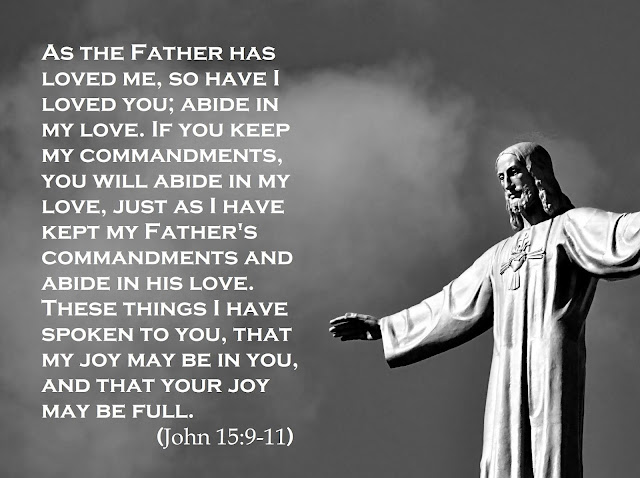1. The Voice of the People Who Pass Down the Story of the Past
One day I had a good opportunity to share topics concerning
theology with some nuns. From the conversation, a small spring of water welled
up and became a stream, and soon the stream became a small river and entered
the mainstream, the stream which runs to the estuary.
“Then he brought me back to the door of the temple; and behold, water was issuing from below the threshold of the temple toward the east (for the temple faced east); and the water was flowing down from below the south end of the threshold of the temple, south of the altar. Then he brought me out by way of the north gate, and led me round on the outside to the outer gate, that faces toward the east; and the water was coming out on the south side. Going on eastward with a line in his hand, the man measured a thousand cubits, and then led me through the water; and it was ankle-deep. Again he measured a thousand, and led me through the water; and it was knee-deep. Again he measured a thousand, and led me through the water; and it was up to the loins. Again he measured a thousand, and it was a river that I could not pass through, for the water had risen; it was deep enough to swim in, a river that could not be passed through.” (Ezekiel 47:1-5)
“War is the work of man. War is destruction of human
life. War is death.” (From Appeal for Peace at Hiroshima by John Paul II,
25 Feb. 1981, Hiroshima Peace Memorial Park)
The history of the people who have been faced with the
unimaginable terror, the “work of man”, demands people who pass down the story
of the past to the next generation. Humans repeat the same error when they
forget the past error. We must never repeat the same error forgetting the
tragedy. The experiences of the “work of man” have been passed down from
generation to generation all over the world, and the voices never cease even
today, almost two thousand years after the Ascension of the Lord. For me, the
voices of the people who pass down the experiences of the “work of man” seem to
be asking Christians why mankind cannot put an end to the “work of man” and demanding
the answer from them. I think this demand is directed to all Christians, a
people who should have received our Saviour and made the new covenant with God,
and it will be transformed into hope, light, for all mankind.
Jesus, who told about woes which seem to be common
even to today’s world1 and calamities which would happen from then2,
must not only have left advice and warning but have prepared everything for
Christians, who receive the descent of the Holy Spirit, to live towards the
Second Coming. It is inconceivable that Jesus, who said, “I am the way, and
the truth, and the life; no one comes to the Father, but by me.” (John
14:6), at the last supper in the Gospel of John, did not prepare the concrete way
for Christians, who live with the Holy Spirit. I, as a Christian, would like to
approach the answer to the question above trusting this conviction.
1 cf. Matthew 23:1-39, Mark 12:38-40, Luke 11:37-52,
20:45-47
2 cf. Matthew
24:1-22, Mark 13:1-20, Luke 21:5-24
Christians, for two thousand years, have passed down
the absurd story in which the only Son of God, who had become man, cried, “My
God, my God, why hast thou forsaken me?” (Matthew 27:46, Mark 15:34), being
crucified amid the “work of man”. I think that entering from the scene of the
crucifixion, which shares the sentiment of the people who pass down the story
of absurdity, is the shortest way to somehow approach the answer to the question
of why we cannot put an end to the “work of man.”
We will be able to understand the contradictory
situation where Jesus, even though God himself, asks something to God at his
end in the scene of the crucifixion when we see this scene on the basis of the description
in John’s Gospel from the viewpoint of John the Evangelist. Jesus’ cry to God in
the Gospel of Matthew and Mark was settled the moment the Father in heaven drew
the people to the foot of the cross as the Gospel of John describes. Jesus, on
the cross, could hardly wait for the time when the Father draws them as Jesus
himself said, “No one can come to me unless the Father who sent me draws him.”
(John 6:44) At last, he saw these people as a result of the drawing power of
the Father. In this way Jesus accomplished the adoption between his mother and
the beloved disciple (the Apostle), then bowed his head and gave up his spirit
saying, “Father, into thy hands I commit my spirit!” (Luke 23:46)
John the Evangelist has given the answer to Jesus’ cry
in the Gospel of Matthew and Mark and connected it to the Gospel of Luke. When
we see the Gospel from the viewpoint of John the Evangelist, each of the four
Gospels seems to well co-work with each other. The only reason why John the
Evangelist, following the three Synoptic Gospels, wrote the scene of the hyssop
of vinegar being held to Jesus’ mouth in the scene of the crucifixion, and only
his Gospel described Jesus receiving the vinegar must be because he wanted to
lead us to this fact (cf. John 19:29-30). Then he showed that the will of the
Father in heaven which Jesus entrusted to the Holy Spirit at his end (cf. John
16:12-15) was on the people whom the Father in heaven
drew so that they could come to Jesus on the cross (cf. John 6:65).
These people, whom the Father in heaven drew to Jesus
on the cross, are those who were entrusted with the new covenant made by Jesus’
blood, which was shed as its cost, so that they may live the new age after the only
Son of God came down to the world as a man, achieved all things and returned to
the Father in heaven, namely the age of the Holy Spirit. Jesus, who was dying,
indeed shed blood and water from his side and entirely covered these people
with them. Who were these people at all?
To be continued.
Aug. 2019 in Hiroshima
Maria K



Comments
Post a Comment